These days eating raw is all the rage! Diners are increasingly opting out of cooked foods in a quest to achieve optimum health and vitality. But before you make a complete diet overhaul, the question must be asked: “is a raw food diet right for me?”.
In this blog, we will teach you how to implement a raw food diet, examine its benefits, and finally explain why a raw food diet isn’t as healthy as you think in some cases.
The Goal of Eating Raw
The Hache Protocol for Pain Resolution™ states that when you engage in proper nutrition habits, you reduce your risk of heart disease, diabetes, stroke, some cancers, and osteoporosis, to name a few.
When eating raw, the overarching goal is to take in as many nutrients as possible in an easy-to-digest manner. Raw foods are often incorporated in a balanced diet—and as we all know, a balanced diet is especially important if you’re trying to heal from chronic pain, inflammation, autoimmune issues, and other severe health conditions.
Good nutrition also reduces high blood pressure, lowers cholesterol, and boosts your immune system—a vital focus when dealing with a worldwide pandemic.
The bottom line: When you eat well, you improve your ability to recover from illness or injury while enjoying a natural increase in energy and vitality!
The Rules of Raw
We want to start by saying that your diet is a very personal lifestyle choice. Each person has the free will and autonomy to decide what works best for their health goals—and should. Remember, there isn’t a raw vegan police force waiting to bust you for eating a bowl of spaghetti; it’s all about doing what’s right and comfortable for you.
You can choose to eat 100% raw foods in a raw food diet or a combination of raw and cooked. Whichever equation you choose—a raw food diet means you will eat a minimal amount (if any) cooked food.
The bulk of a raw diet will consist of raw fruits and vegetables, nuts, and seeds. Some who have hopped on the raw bandwagon choose to consume fish, fermented foods, eggs, sprouted grains, and even some meat and raw dairy products—that’s okay too!
What’s Off Limits?

When eating raw, foods like pasta, flour, salt, sugars, juices, and anything processed or pasteurized is out of the question.
Though raw food diets vary, they all share a focus on organic options and a lack of pasteurized, homogenized, and processed foods. Additionally, a raw diet focuses on avoiding foods grown with or produced with synthetic pesticides, industrial solvents, chemical fertilizers, or chemical food additives.
What are the Risks of a Raw Food Diet?
There are several reasons why a raw food diet isn’t as healthy as you think in some cases:
Food Poisoning Risk—Some plant-based foods can be dangerous if consumed uncooked, including buckwheat greens, sprouts, some mushrooms, cassava, and kidney beans. If you’re on a raw diet that includes some meat, watch out! The CDC warns that uncooked animal products run a high risk of causing food poisoning.
Fertility Problems— A 1999 study found that women eating only raw foods were seven times more likely to experience amenorrhea (lack of menstruation) than other women.
Lack of Protein— A raw vegan diet lacks the protein your body needs. Protein is essential for immune function, building muscle, and healing. Increased protein is an essential part of dealing with the increased metabolic activity of wound healing.
Low in Vitamin D— It’s been reported that a raw vegan diet can result in low bone mass due to a lack of Vitamin D.
Risk of Tooth Decay— It’s believed that a raw diet causes tooth decay due to a high concentration of citrus and berries, which are very acidic. One study found that a whopping 97.7% of people on a raw vegan diet experienced tooth erosion, compared to only 86.8% in the control group.
To Go Raw or Not to Go Raw: That Is the Question

While there are many fans of the raw diet, it’s not for everyone. Why? There are a few reasons:
- It doesn’t fit your lifestyle. Going raw will drastically alter your eating patterns. Eating out is much more difficult on a raw diet – and eating in isn’t so easy either. Your grocery bill will likely be significantly higher, and if you live in a rural or northern area, fresh produce may be difficult to find (at least in winter).
- Hard digestion. While the goal of a raw diet is to make food easier to digest, in some cases it does the opposite. Cooking food helps break it down, making less work for your digestive system. And while most people believe that cooking your food destroys some of the nutritional content, there is some evidence that cooking can actually make some nutrients in our food available that aren’t in a raw state.
- Your health could suffer. Lots of people love eating raw, and we don’t want to diminish the good it’s done them. But each person is unique, and no one diet is perfect for everyone. Some people find that raw food simply doesn’t agree with them. A common example is tomatoes. Many people are sensitive or allergic to raw tomatoes, but can eat them just fine once they’re cooked.
Raw food isn’t inherently unhealthy – but neither is cooked food. It’s all about personal preference and finding what works best for you, your body, and your lifestyle.
So, what do you do?
Make it a focus to enjoy a variety of fruits and vegetables in your diet every day. Whether you eat them raw or cooked, you can enjoy all the health-boosting benefits of fresh foods!
To learn more about nutrition and how it affects your health, read our blogs:
- Immunity the Hache Way: Immunity and Nutrition
- The Top 7 Health-Boosting Benefits of Bone Broth
- Meat and Inflammation—The Shocking Connection
We recommend our private membership program and online training for fully customized support in a diet that promotes healing from chronic pain, inflammation, and autoimmune disease.





